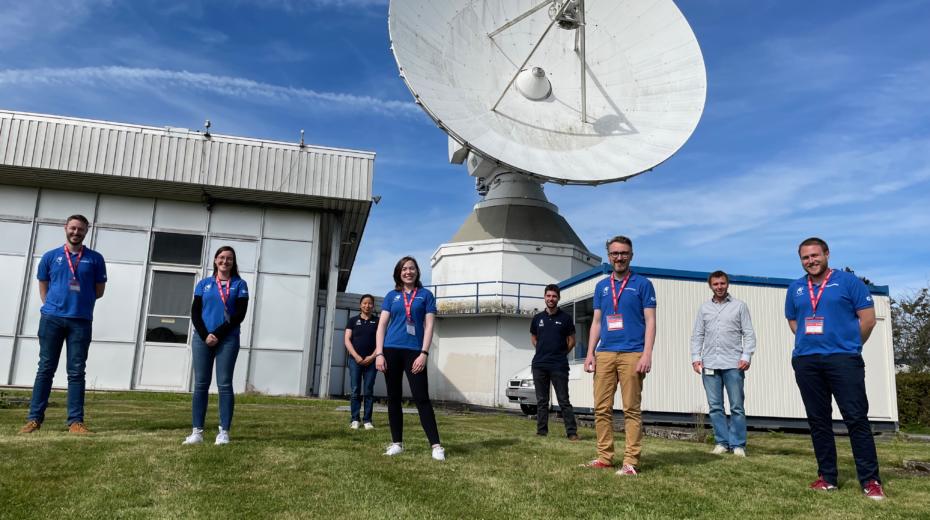
Ireland’s first satellite faces testing times with ESA
UCD’s space team is running crucial environmental tests on Ireland’s first satellite in the European Space Agency (ESA) Education Centre CubeSat support facility in Belgium.
The Eirsat-1 project is to build, test, launch and operate Ireland’s first satellite which will perform in-orbit demonstrations of three novel payloads developed in UCD.
The team has already developed space systems skills that did not previously exist in Irish industry or academia and their work will position Ireland to benefit from global space industry growth expected in the coming decades and inspire the next generation of students.
“It’s exciting to be at ESA Education’s CubeSat support facility during Space Week with EIRSAT-1’s environmental qualification model,” said Dr David Murphy, ESA Education Centre in Redu, Belgium, researcher and EIRSAT-1 Systems Engineer. “The team is spending five weeks here to perform important environmental testing on the spacecraft. It has been shaken to simulate launch on a rocket and it is now being tested in the thermal vacuum chamber which subjects it to extreme hot and cold temperatures in a vacuum environment, just as it will experience during spaceflight. It’s incredible to see the project reach this very important milestone and to think about how far we have come since we first imagined Eirsat-1.”
While in space, Eirsat-1 will detect and record bursts of gamma-rays using a detector developed by UCD’s Space Science group. It will also test a novel ‘attitude’ (spacecraft’s orientation in space) control system developed by the Dynamics and Control Group in UCD, and test the performance in space of protective coatings made by Irish space tech firm Enbio Ltd.
Director of UCD Centre for Space Research (C-Space) Prof Lorraine Hanlon said: “This exhaustive test campaign is the most important milestone for the Eirsat-1 project so far. We knew that all the parts of the spacecraft could survive the launch and space environment, but the enormous effort put in by the Eirsat-1 team and ESA Fly Your Satellite! team has now given us confidence in the spacecraft as a whole. It means we have a solid, robust, and capable design for the first Irish spacecraft. We now enter the build phase for the Flight Model with extremely high confidence.”
“The gamma-ray detector was developed in-house from an idea and is now a payload in a qualified satellite,” said Sheila McBreen, associate professor, UCD, C-Space member and academic lead on the gamma-ray detector module. “We look forward to measuring bursts of radiation from the deaths of stars in orbit with the flight model.”
“The Eirsat-1 mission of UCD is a truly unique and ambitious university project, in which the students are faced with the same type of challenges that ESA professionals are confronted with on a daily basis,” said Joost Vanreusel, head of the ESA Academy. “By applying the same techniques that are used for larger satellites under guidance of ESA experts, the team’s hard work is serving two purposes: firstly verifying that the satellite will be ready to successfully execute its mission, while at the same time this next generation of space scientists and engineers is being further trained to work on Ireland’s and Europe’s future space programmes.”
The global space sector – which includes technology, communications and Earth Observation (which benefits industries such as transport and agriculture, as well as climate change monitoring) – has been growing by five per cent per year on average and is forecast to be worth €1 trillion by 2040.
Ireland is currently the only full member of ESA that does not have its own satellite but that will be rectified when Eirsat-1 is delivered to ESA next year.
TechCentral Reporters







Subscribers 0
Fans 0
Followers 0
Followers